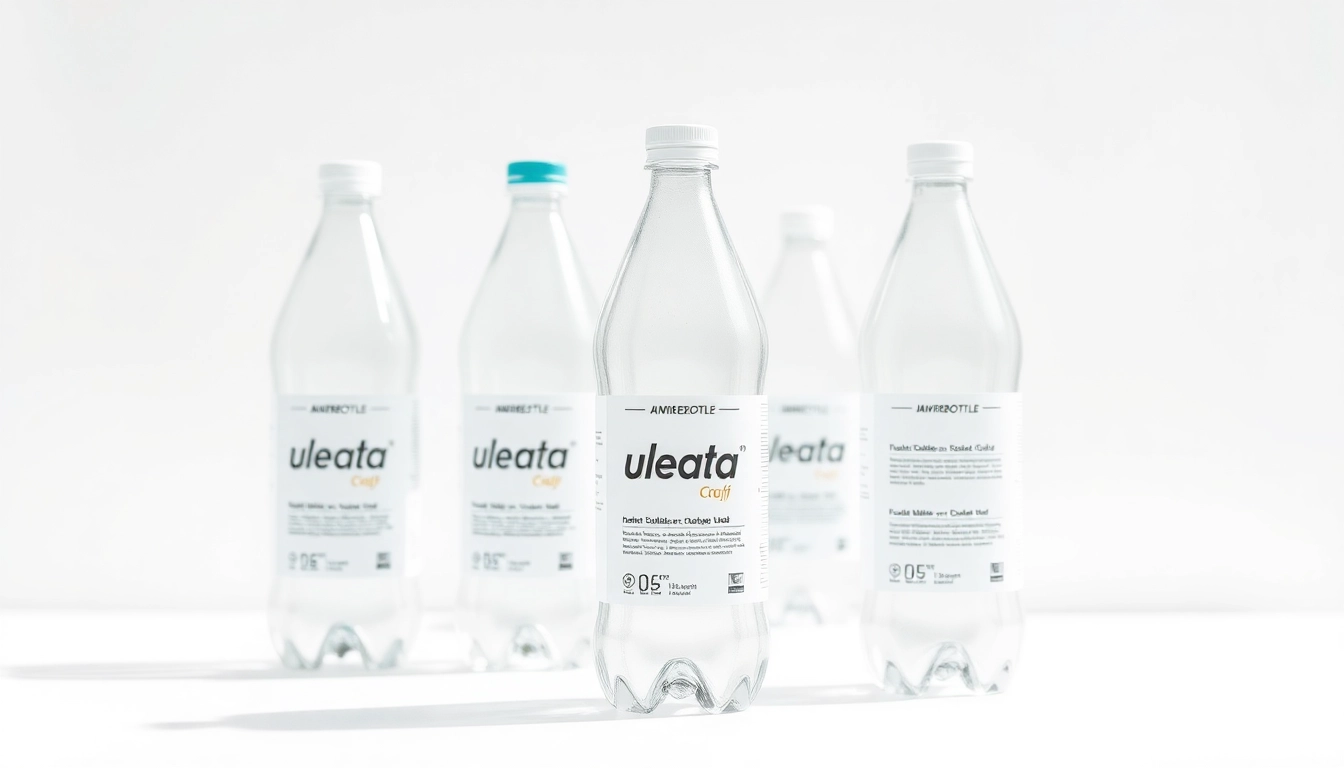Introduction to Plastic Şişe and Its Industry Significance
Plastic şişe, a ubiquitous packaging solution, has fundamentally transformed the global food, beverage, pharmaceutical, and industrial sectors. Made primarily from high-density plastics, these containers are prized for their lightweight, durability, and cost-effectiveness, making them the preferred choice for transporting liquids like water, carbonated drinks, cleaning agents, and industrial chemicals. The prominence of plastik şişe within the packaging industry underscores its critical role in expanding access to safe, portable consumption and simplifying storage logistics worldwide.
Their evolution from simple containers to complex, innovation-driven products reflects ongoing advancements in manufacturing techniques, material science, and environmental sustainability efforts. As consumer demands shift towards eco-friendly options and stricter regulations emerge, the industry stands at a crossroads—balancing growth with environmental responsibility. This article provides a comprehensive analysis of plastic şişe types, design considerations, environmental impacts, sustainability initiatives, and future trends, offering valuable insights for manufacturers, business owners, and sustainability advocates alike.
Types of Plastic Şişe and Material Differences
High-Density Polyethylene (HDPE) – Durability and Chemical Resistance
HDPE is one of the most widely used plastics for manufacturing sturdier, impact-resistant bottles. Recognized for its excellent chemical resistance, HDPE is commonly found in bottles for detergents, toiletries, and industrial chemicals. Its high tensile strength ensures that containers withstand rough handling, making it ideal for bulk storage and transportation. Additionally, HDPE is semi-rigid, providing structural integrity while remaining lightweight, which helps reduce shipping costs and environmental footprint.
Polyethylene Terephthalate (PET) – Clarity and Recyclability
PET is the material most frequently associated with beverage bottles, especially for water, soft drinks, and juices. Its transparent, glass-like appearance appeals to consumers seeking visual clarity of contents, and it offers excellent barrier properties that preserve the freshness and carbonation of drinks. PET bottles are also highly recyclable, with a well-established collection and recycling infrastructure, enabling manufacturers to develop sustainable closed-loop systems. This recyclability has made PET a cornerstone of eco-conscious packaging strategies, although concerns about plastic waste persist.
Polypropylene (PP) and Other Plastic Variants
Polypropylene (PP) offers a balance of chemical resistance, high melting point, and flexibility, making it suitable for health and beauty products, medicine bottles, and certain food containers. Other plastics such as low-density polyethylene (LDPE) and polycarbonate are used for specific applications, depending on the required flexibility, transparency, and durability. Understanding these material distinctions enables manufacturers to select the optimal plastic type for product safety, consumer appeal, and environmental compliance.
Design Considerations for Producing Plastic Şişe
Optimal Sizes and Shapes for Target Markets
Designing plastic şişe involves strategic decisions about size, shape, and functionality tailored to end-use markets. For beverages, slim, ergonomic bottles facilitate comfortable handling, while industrial bottles often favor larger, more robust designs for bulk storage. Market research reveals that consumer preferences, transportation efficiency, and branding visibility influence size specifications. Innovative design trends include collapsible bottles for travel convenience and customized shapes for premium branding, which can significantly enhance consumer engagement and market differentiation.
Labeling, Branding, and Consumer Appeal
Effective labeling enhances brand recognition and informs consumers about product contents, safety warnings, and recycling instructions. High-quality printing on plastic surfaces must withstand environmental conditions like moisture, UV exposure, and handling wear. Many manufacturers incorporate textured labels, holograms, or embossing to elevate perceived value. Optimizing label positioning and design amplifies visual impact, while eco-friendly labeling options mitigate environmental concerns. A cohesive branding approach aligned with product aesthetics ultimately boosts consumer loyalty.
Manufacturing Processes and Quality Control
The production of plastic şişe involves precise processes such as injection molding, blow molding, and extrusion. Blow molding, in particular, is prevalent for manufacturing hollow bottles efficiently at scale. Quality control measures—including dimensional accuracy, comprehensive leak testing, and material consistency—are critical to ensure product safety and compliance with industry standards. Implementing automated inspection systems and adhering to ISO protocols helps reduce defect rates, maintain manufacturing efficiency, and uphold brand reputation.
Environmental Impact and Recycling of Plastic Şişe
Recycling Codes and Sorting Tips
Plastic şişe carry standardized recycling codes, typically indicated by a triangle with a number inside, representing the plastic type—PET, HDPE, PP, etc. Proper sorting by these codes is vital for efficient recycling processes. Consumers should rinse bottles to remove residues before disposal and segregate plastics accordingly. Recycling infrastructure in many regions promotes the transformation of discarded bottles into new products, reducing landfill accumulation and conserving resources. Promoting awareness and transparent collection systems is key to enhancing recycling rates.
Reducing Plastic Waste with Reusable Alternatives
Transitioning to reusable bottles, such as stainless steel or glass containers, stands as a practical solution to mitigate environmental impacts associated with single-use plastic şişe. Companies and individuals are encouraged to adopt refillable options, supported by incentives and awareness campaigns. Implementing deposit-return schemes and establishing widespread refill stations encourages responsible consumption behaviors. These efforts contribute significantly to reducing plastic waste, conserving raw materials, and fostering sustainable lifestyles.
Innovative Eco-Friendly Packaging Solutions
Industry pioneers are developing biodegradable plastics, plant-based resins, and material composites that decompose faster in natural environments. Technologies like bioplastics derived from cornstarch or sugarcane are gaining traction, offering similar performance characteristics to conventional plastics while reducing reliance on fossil fuels. Additionally, innovations in multi-layer recycling and chemical recycling aim to facilitate the reuse of complex plastic materials. These eco-centric initiatives highlight a promising pathway toward sustainable packaging ecosystems.
Future Trends and Sustainable Development
Bioplastics and Alternatives to Conventional Plastic
Bioplastics represent a game-changing innovation in the industry—offering renewable, biodegradable alternatives to traditional plastics. With advancements in process efficiency and cost reduction, bioplastics such as polylactic acid (PLA) and polyhydroxyalkanoates (PHA) are increasingly integrated into manufacturing. Their adoption aligns with global sustainability goals, enabling brands to meet consumer demand for environmentally responsible products and comply with tightening regulations.
Legislation and Industry Regulations
Governments worldwide are implementing stricter policies to limit plastic waste, including bans on single-use plastics and mandates for recyclability. Industry standards are evolving to emphasize eco-design, recyclable packaging, and reduced plastic content. Compliance with regulations such as EU packaging directives or national plastic bans is vital for market access. Staying ahead of legislative changes requires proactive adjustment of manufacturing practices, material selection, and corporate sustainability strategies.
Case Studies of Successful Sustainable Initiatives
Leading companies are demonstrating effective sustainability models—Nike’s recycled plastic shoes, Coca-Cola’s PlantBottle initiative, and Loop’s reusable packaging system showcase how innovation and corporate responsibility can coexist profitably. These case studies exemplify successful integration of eco-friendly materials, consumer engagement strategies, and lifecycle management. Replicating these models involves comprehensive planning, stakeholder collaboration, and transparent communication to achieve measurable environmental benefits.



